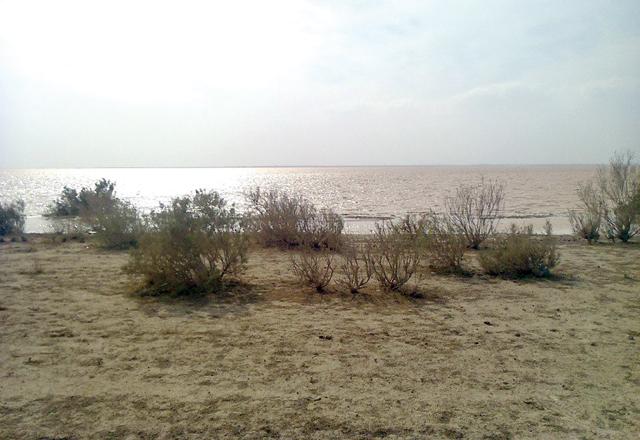You are here
Azraq mudflat regains ‘former glory’ after winter rains
By Hana Namrouqa - Mar 22,2017 - Last updated at Mar 22,2017

Al Qaa is a 62-kilometre seasonal lake that forms during the winter when rainwater from the mountains of Jordan, Saudi Arabia and Syria flows to the lowest part of the Azraq basin (Photo courtesy of Hazem Hreisha)
AMMAN — Unprecedented winter floods turned Azraq’s mudflat, locally referred to as Al Qaa, into a lake in the middle of the Kingdom’s eastern desert, a conservationist said on Monday.
Strong floods during the winter brought large amounts of rainwater into Al Qaa, according to Azraq Wetland Reserve Director Hazem Hreisha, who said that the area had not received this level of rainwater in two decades.
“The last time Al Qaa received this much rainwater was in 1994. The mudflat now looks like a lake in the middle of the desert; it has regained its former glory,” Hreisha said.
Al Qaa is a 62-kilometre seasonal lake that forms during the winter when rainwater from the mountains of Jordan, Saudi Arabia and Syria flows to the lowest part of the Azraq basin. The water of the seasonal lake dries up by summer, leaving thick layers of salt.
Azraq’s mudflat was recently added to the Azraq Wetland Reserve by a Cabinet decision that expanded the boundaries of the wetland reserve to include the seasonal lake.
The Royal Society for the Conservation of Nature (RSCN), which established and manages the reserve, said that Al Qaa is an important site for migratory birds and adding it to the boundaries of the wetland reserve will improve efforts to preserve the vital ecosystems of the wetland.
Al Qaa plays a major role in recharging the Azraq basin aquifer, according to the RSCN, which will implement sustainable eco-friendly projects at Al Qaa, including bird watching.
In 1977, the Ramsar Convention declared Azraq wetland, around 100km east of Amman, and the adjacent mudflat as a major station for migratory birds on the African-Eurasian flyway, as a variety of birds flock to the reserve each year, stopping for a short rest along their migration routes, staying for the winter, or breeding within the wetland, according to the RSCN.
Spread over 75 square kilometres, before adding Al Qaa to its borders, the wetland reserve is home to marshlands, natural pools and streams that attract thousands of birds each year.
The wetland receives its water from the Azraq joint basin, 94 per cent of which is located in Jordan, 5 per cent in Syria and 1 per cent in Saudi Arabia. The wetland is fed by three main springs that produce 20 million cubic metres (mcm) of water each year, according to ecologists.
Supplying Amman with 17mcm of potable water annually and 43mcm for irrigation, the basin is showing signs of salinity and depletion, a study released by the International Union for the Conservation of Nature has indicated.
The excessive extraction of water from the wetland, which started in 1980, has caused water levels to drop by 12-15 metres below the surface, leaving only 0.04 per cent of the marshland that was once rich with flora and fauna, according to experts.
Related Articles
AMMAN — Eco-tourism and sustainable income generating projects will be developed at Azraq’s mudflat, which was recently added to the Azraq W
AMMAN — Visitors to Azraq Wetland Reserve, one of Jordan’s oldest natural sanctuaries, this summer will have the chance to explore the wild
AMMAN — The rehabilitation of the Azraq Wetland Reserve and the pumping of water to different parts of the oasis have diversified the bird s













